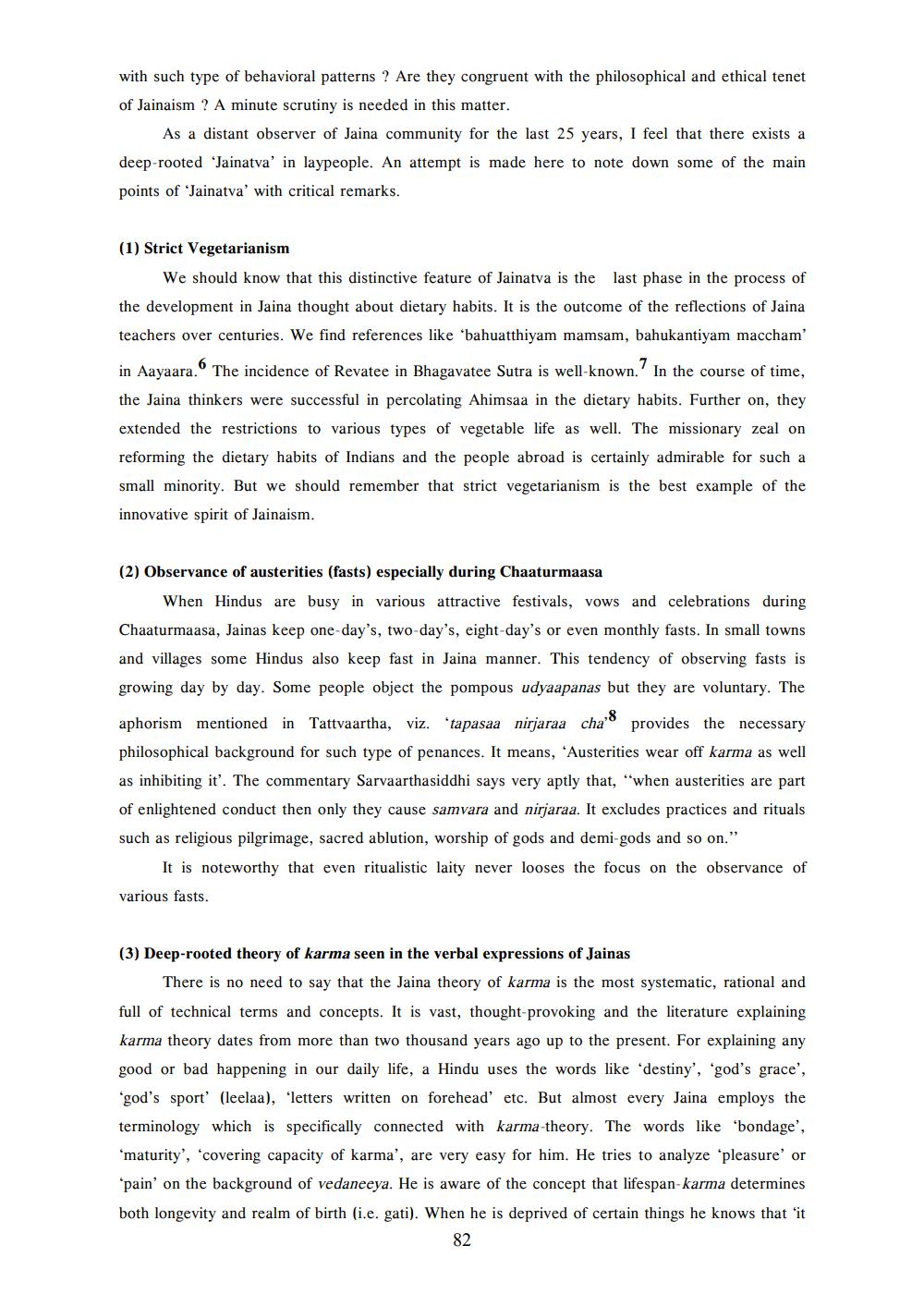________________
with such type of behavioral patterns ? Are they congruent with the philosophical and ethical tenet of Jainaism? A minute scrutiny is needed in this matter.
As a distant observer of Jaina community for the last 25 years, I feel that there exists a deep-rooted 'Jainatva' in laypeople. An attempt is made here to note down some of the main points of 'Jainatva' with critical remarks.
(1) Strict Vegetarianism
We should know that this distinctive feature of Jainatva is the last phase in the process of the development in Jaina thought about dietary habits. It is the outcome of the reflections of Jaina teachers over centuries. We find references like 'bahuatthiyam mamsam, bahukantiyam maccham'
in Aayaara. The incidence of Revatee in Bhagavatee Sutra is well-known. In the course of time, the Jaina thinkers were successful in percolating Ahimsaa in the dietary habits. Further on, they extended the restrictions to various types of vegetable life as well. The missionary zeal on reforming the dietary habits of Indians and the people abroad is certainly admirable for such a small minority. But we should remember that strict vegetarianism is the best example of the innovative spirit of Jainaism.
(2) Observance of austerities (fasts) especially during Chaaturmaasa
When Hindus are busy in various attractive festivals, vows and celebrations during Chaaturmaasa, Jainas keep one-day's, two-day's, eight-day's or even monthly fasts. In small towns and villages some Hindus also keep fast in Jaina manner. This tendency of observing fasts is growing day by day. Some people object the pompous udyaapanas but they are voluntary. The aphorism mentioned in Tattvaartha, viz. *tapasaa nirjaraa cha' provides the necessary philosophical background for such type of penances. It means, 'Austerities wear off karma as well as inhibiting it'. The commentary Sarvaarthasiddhi says very aptly that, "when austerities are part of enlightened conduct then only they cause samvara and nirjaraa. It excludes practices and rituals such as religious pilgrimage, sacred ablution, worship of gods and demi-gods and so on."
It is noteworthy that even ritualistic laity never looses the focus on the observance of various fasts.
(3) Deep-rooted theory of karma seen in the verbal expressions of Jainas
There is no need to say that the Jaina theory of karma is the most systematic, rational and full of technical terms and concepts. It is vast, thought-provoking and the literature explaining karma theory dates from more than two thousand years ago up to the present. For explaining any good or bad happening in our daily life, a Hindu uses the words like 'destiny', 'god's grace', god's sport' (leelaa), 'letters written on forehead' etc. But almost every Jaina employs the terminology which is specifically connected with karma-theory. The words like 'bondage', *maturity', 'covering capacity of karma', are very easy for him. He tries to analyze pleasure' or *pain' on the background of vedaneeya. He is aware of the concept that lifespan-karma determines both longevity and realm of birth (i.e. gati). When he is deprived of certain things he knows that 'it
82




